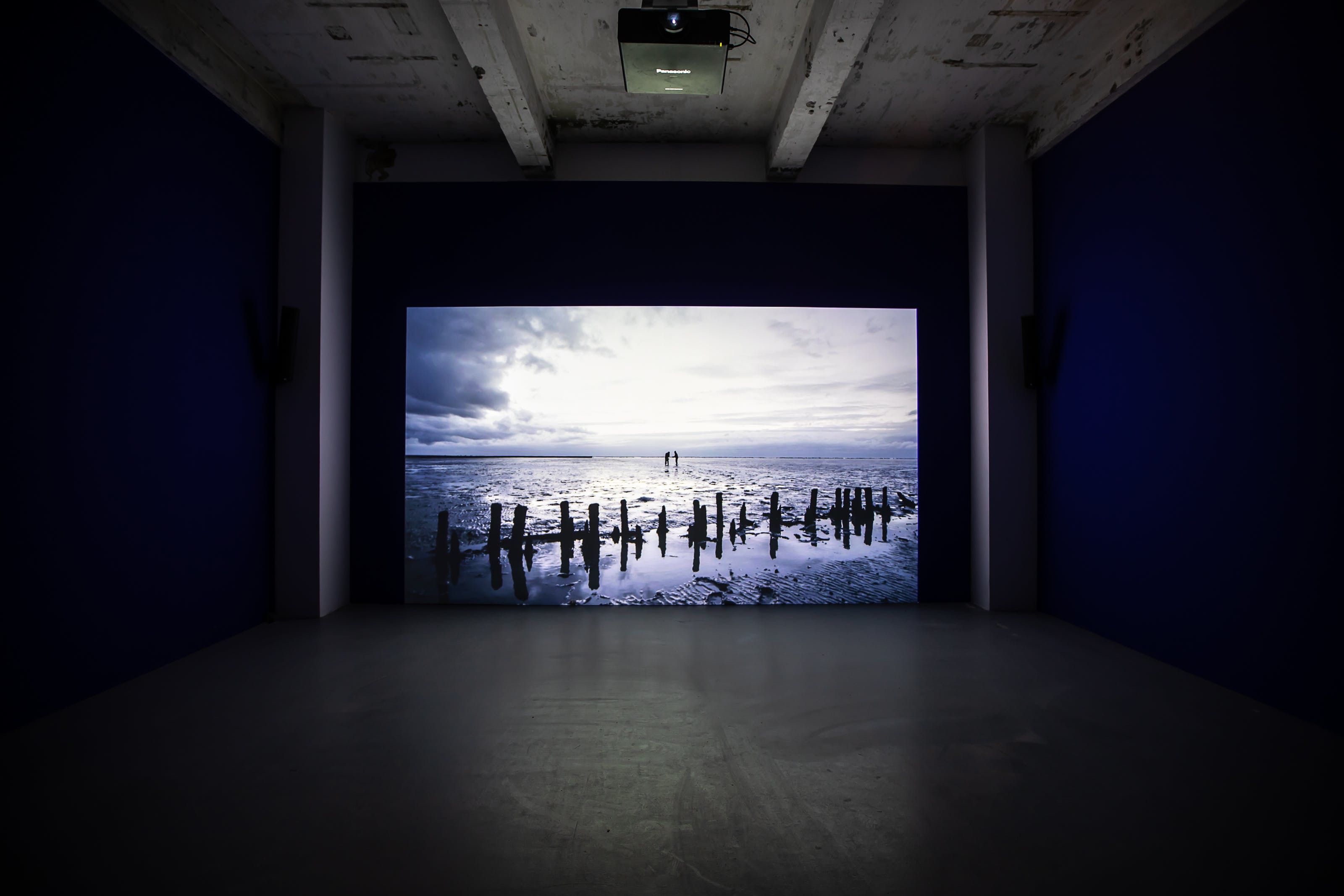Content type: Research Project and Speculative Film
Credit: Sissel Marie Tonn (artist and visiting artist, KABK MA Artistic Research), in collaboration with Heather Leslie (leading expert in international (micro)plastics and ecotoxicology) and Juan Garcia Vallejo (Associate Professor, Amsterdam University Medical Center).
Year: 2020–ongoing
‘Many marine organisms—from whales to mussels—are considered “sentinel species”. Their sensitivity to pollution warns us about the state of our oceans.’
Introduction:
The speculative film Becoming a Sentinel Species is part of a larger project that brings together artistic research and scientific expertise to explore the toxicity and impacts of microplastics on our bodies and the environment. The film follows two researchers who take on the responsibility of becoming "sentinel species" (or canaries in the coal mine) to see how introducing microplastics into their bodies will affect them. The film combines fictional/staged footage with documentary footage of real experiments, blurring the line between science and speculation.
The project explores our deep past—how we have evolved from sea-dwelling creatures who absorbed things into their bodies through liquids. It also explores the deep future—through speculation on the neurophysiological and unseen consequences that we will face if we continue to pollute with and ingest microplastics. The project encourages us to take an empathic perspective on microplastic pollution, suggesting that as a species, humans should not see themselves as separate from other animals who are suffering as a consequence of pollution and the unequal distribution of toxicity.
The project is an example of how, through art and design, we can create alternative narratives about microplastics and our relationship to the planet.
Sissel Marie Tonn, Heather Leslie, and Juan Garcia Vallejo won a Bio Art and Design (BAD) Award in 2020 for the project pitch and the film, which premiered at MU, Eindhoven on 11 December 2020.
Below is a text written by Sissel Marie Tonn (originally published on her website) that explains her research interest in sentinel species and microplastics alongside stills from the film footage, exhibition images showing some props and an interview with MU about the BAD award and project. All images are reproduced here with the permission of the artist.
Becoming a Sentinel Species
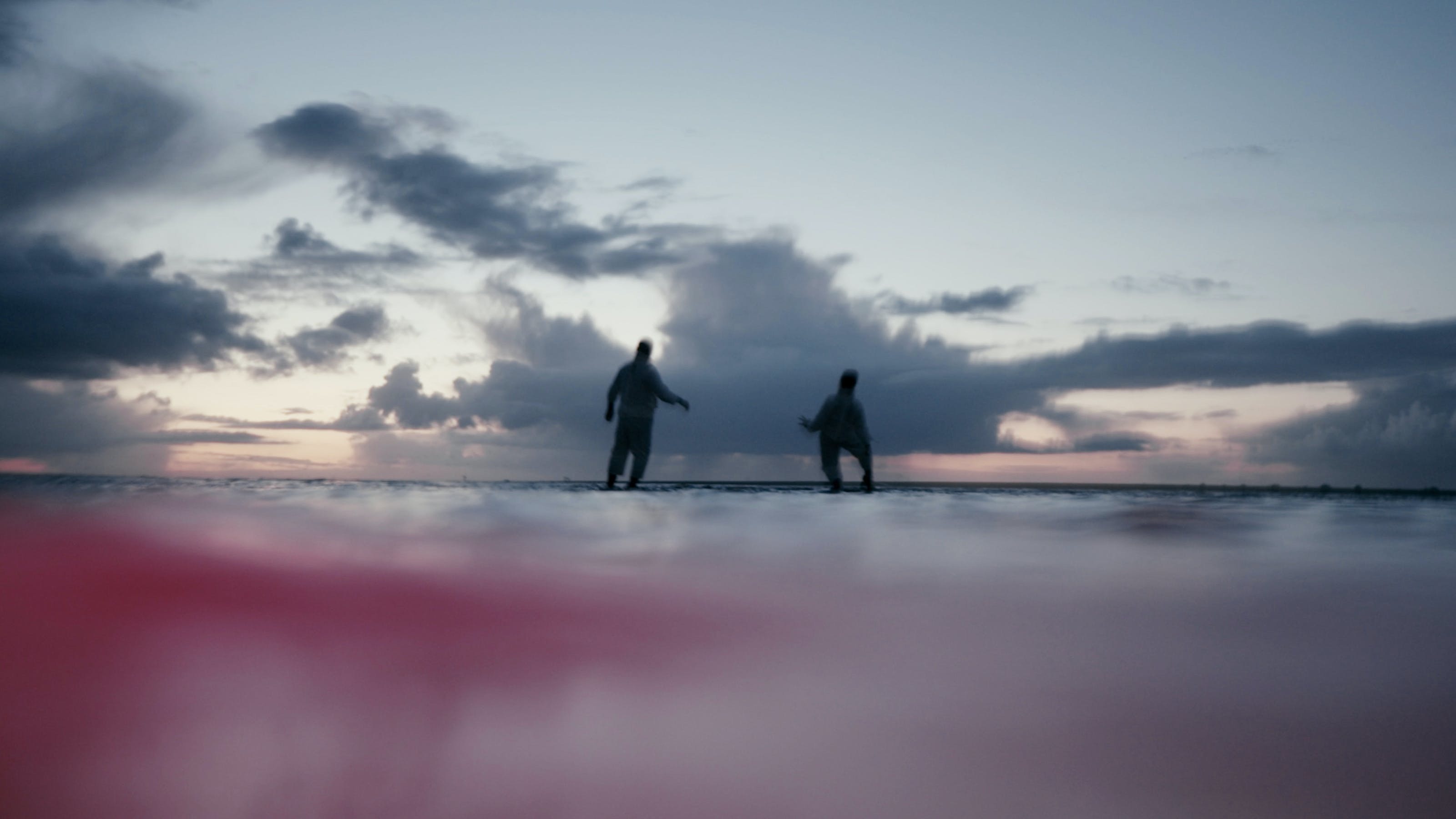
Since our distant ancestors left the primordial ocean, the sea has travelled with us, or within us. The blood and interstitial fluids of our bodies continue to connect us with our surroundings in a myriad of life-giving ways. It is becoming evident, however, that through these fluid exchanges, our bodies increasingly encounter the runoffs of our techno-exuberant age.
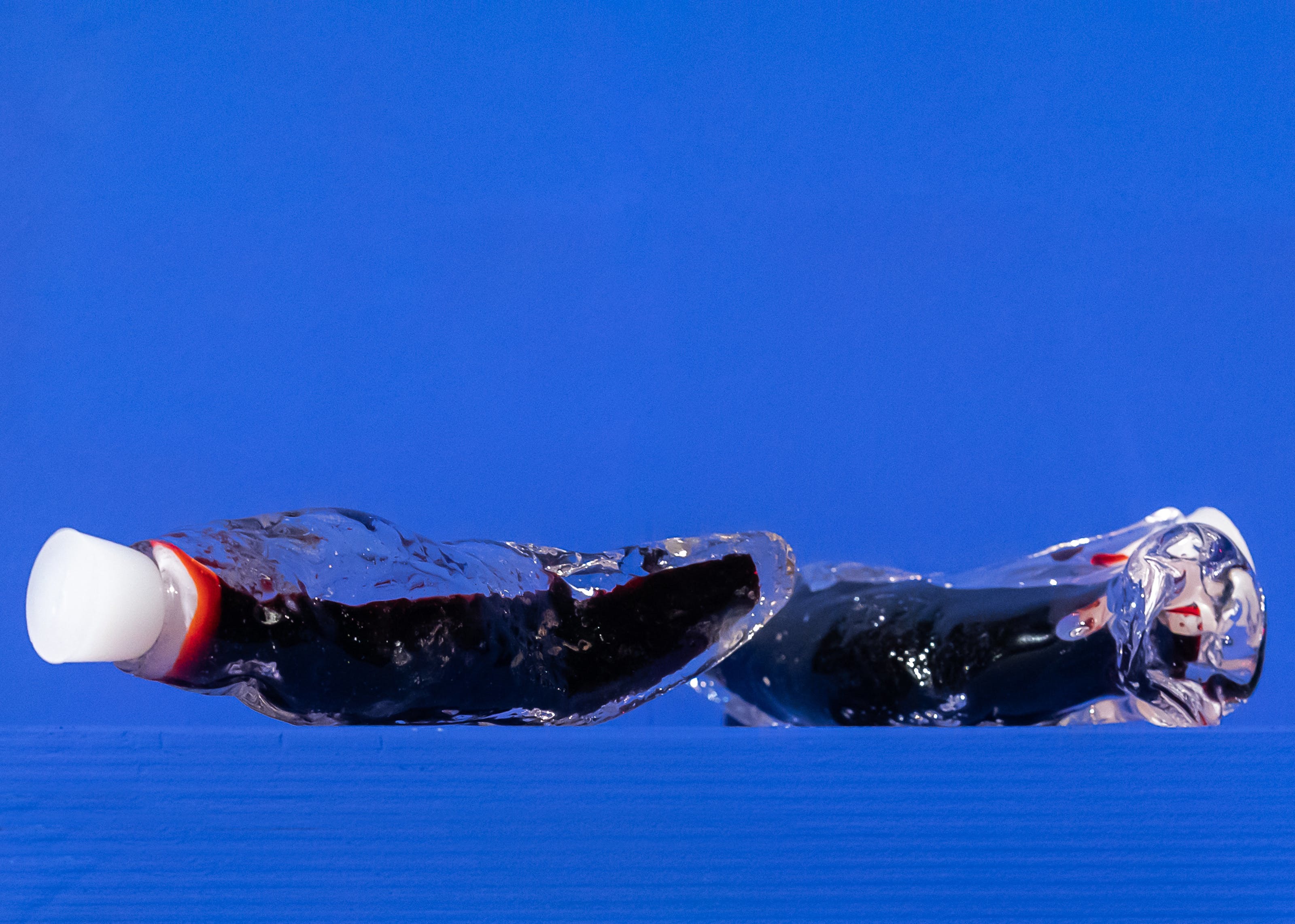
Many marine organisms—from whales to mussels—are considered "sentinel species". Their sensitivity to pollution warns us about the state of our oceans. It has been known for decades that microplastics accumulate in marine organisms, but recent research indicates that these foreign particles also appear in our bodies, potentially harming the immune system.
I wanted to question this hierarchy by imagining a scenario where humans actively take on the role and responsibility of becoming a sentinel
The concept of sentinel species—the canaries in the coal mines of our polluted environments—points to an implicit hierarchy in terms of the unequal distribution of toxicity. There are always some bodies that are more exposed, more vulnerable and thus more sensitive to pollution than others.
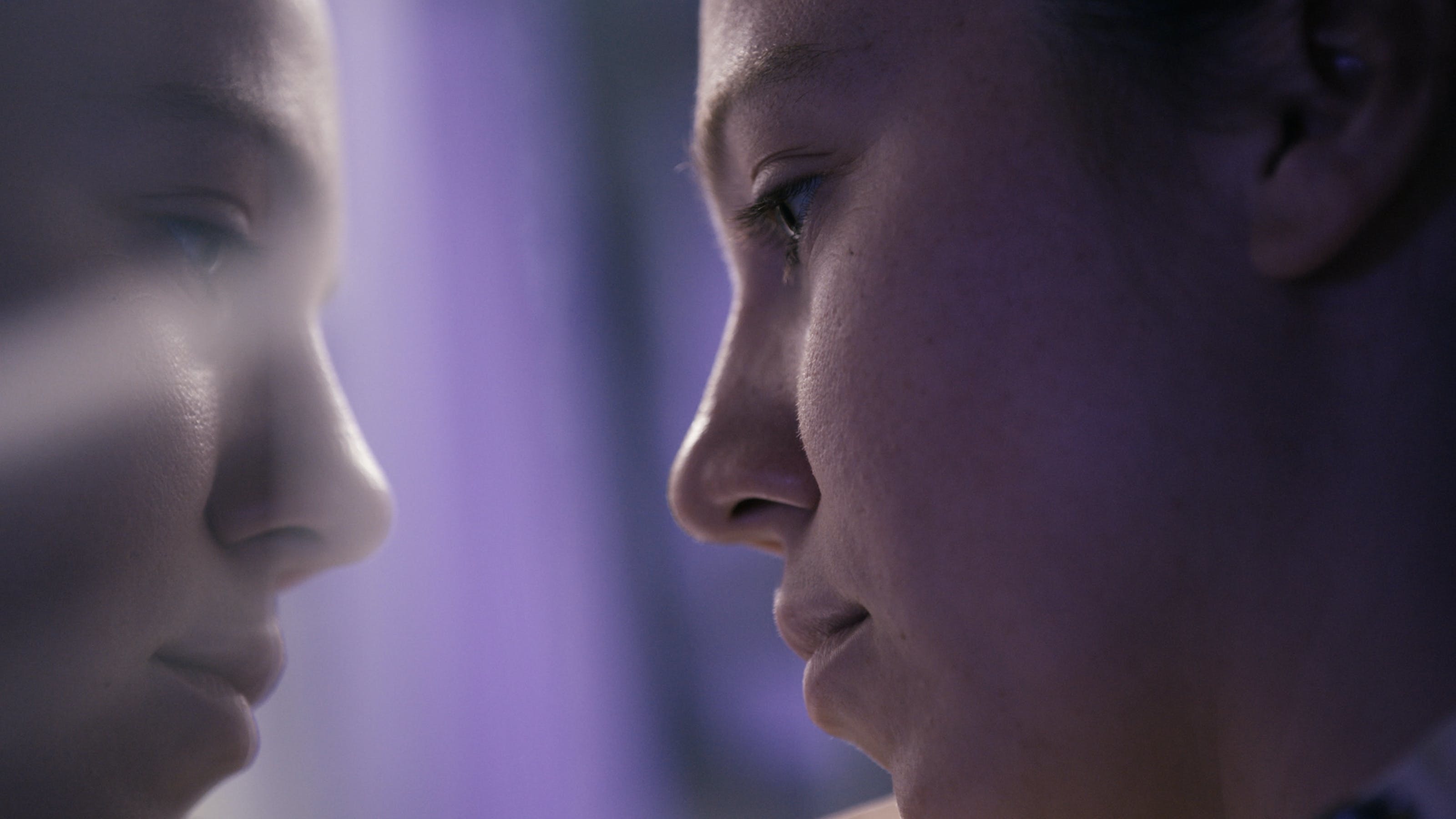
With this project, I wanted to question this hierarchy by imagining a scenario where humans actively take on the role and responsibility of becoming a sentinel.
I became fascinated by the idea of plastic as a material that, in a sense, disrupts an ancient logic within the human body. Reading more about the work of pioneering immunologist Polly Matzinger, I learned that because life evolved in water, the hydrophobic portions of cellular molecules are hidden inside membranes. When the body is injured the hydrophobic portion of the molecule becomes exposed, which in turn triggers the immune system to release chemical signals and attack the damaged tissue. As microplastics are also highly hydrophobic could we imagine that these particles might similarly trigger the same ancient alarm systems?
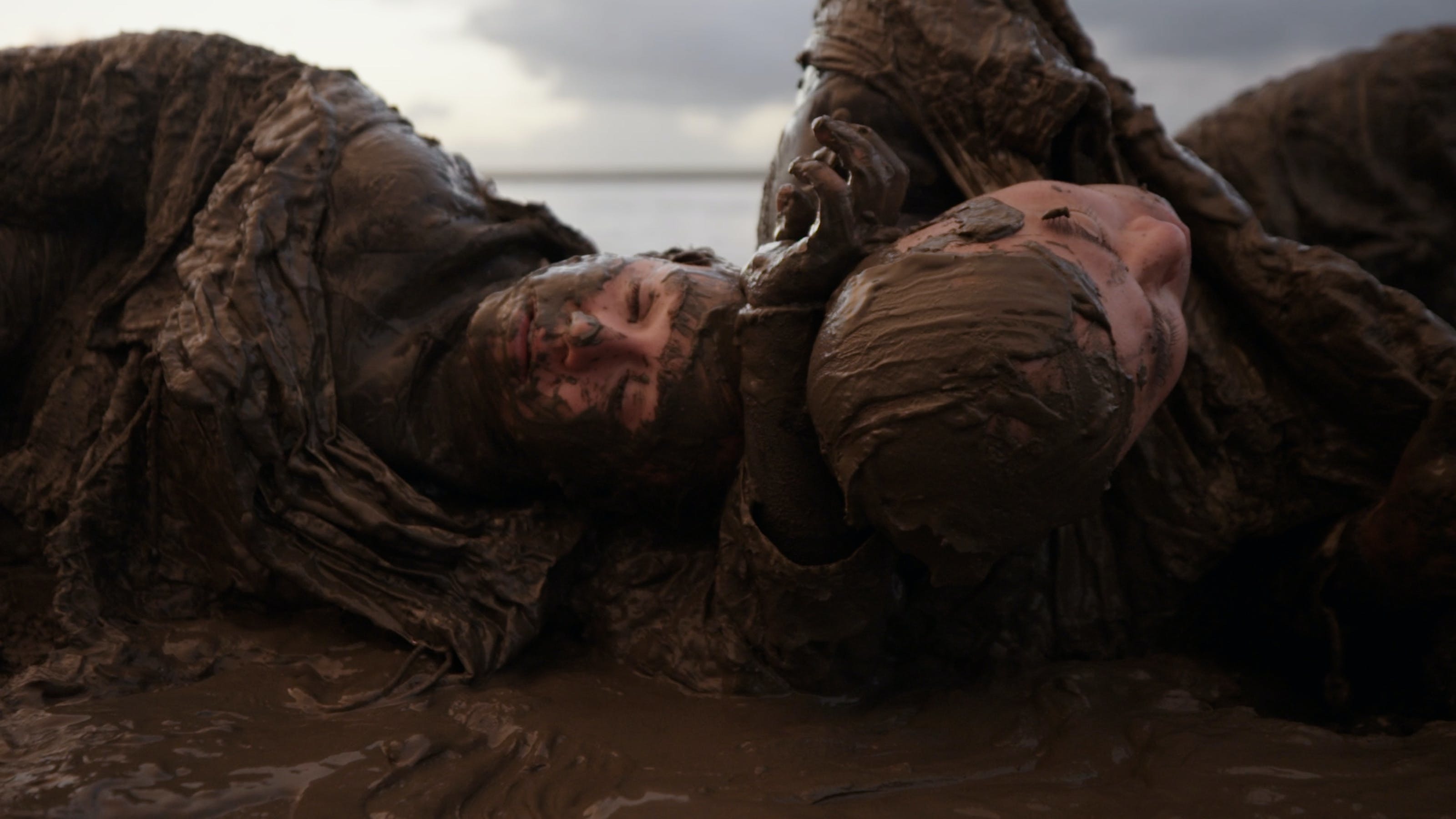
This speculation gives way to a fictional story in which human sentinels-to-be actively engineer their macrophages to eat microplastics. They develop prosthetic 'carrier-organs' in which they isolate and incubate microplastics from their own 'inner ocean'—their blood—and feed them microplastics found in the sea. As the in-vitro macrophages encounter the hydrophobic microplastic particles they emit chemical signals—or cytokines—their ancient way of telling the body that something is amiss.
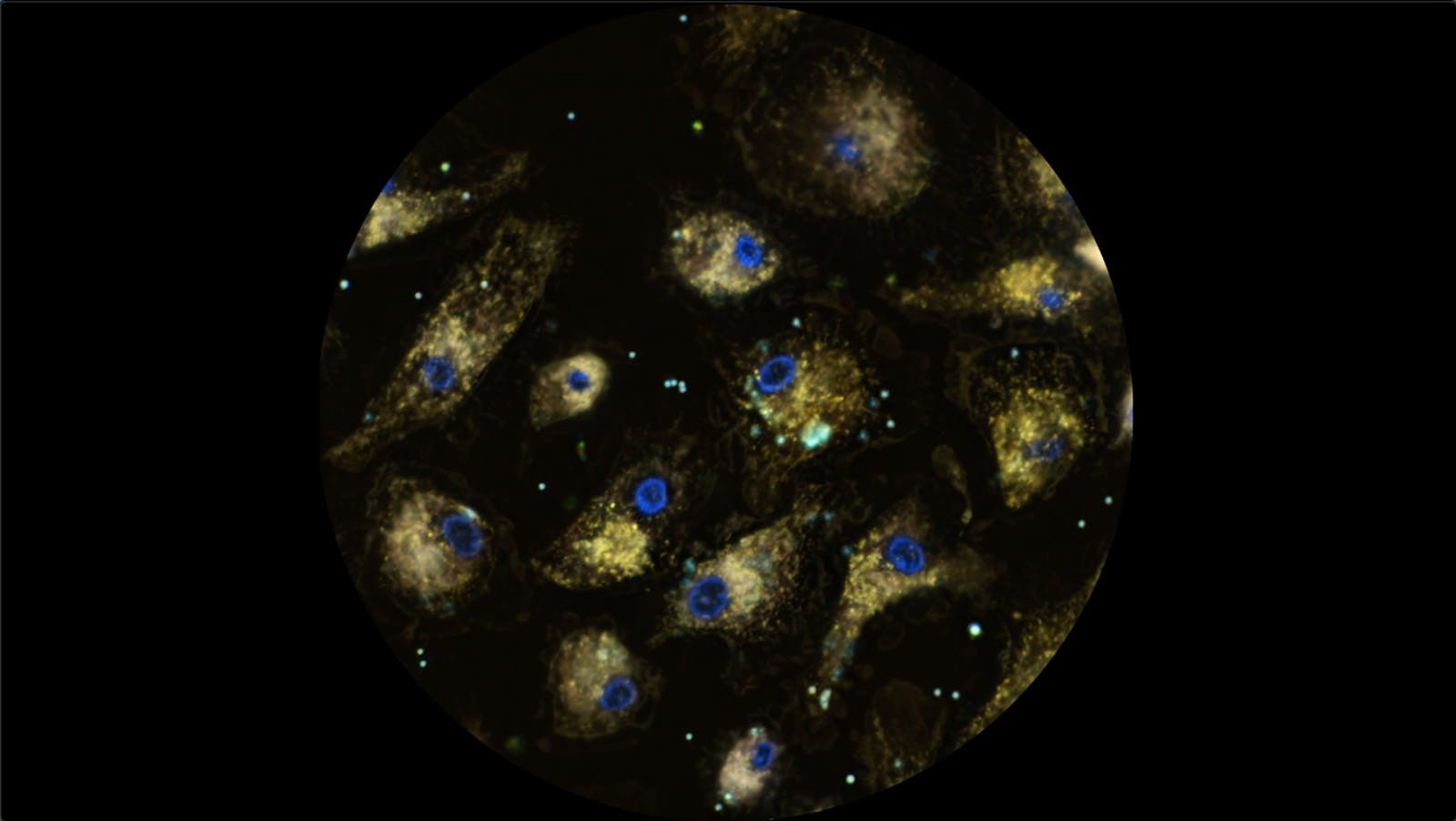
As this immunological memory of our evolutionary past is awakened, the human sentinels-to-be harvest and re-inject these chemical messengers to induce psychotropic, hallucinatory 'memories' of our shared, watery origins in the primordial sea.
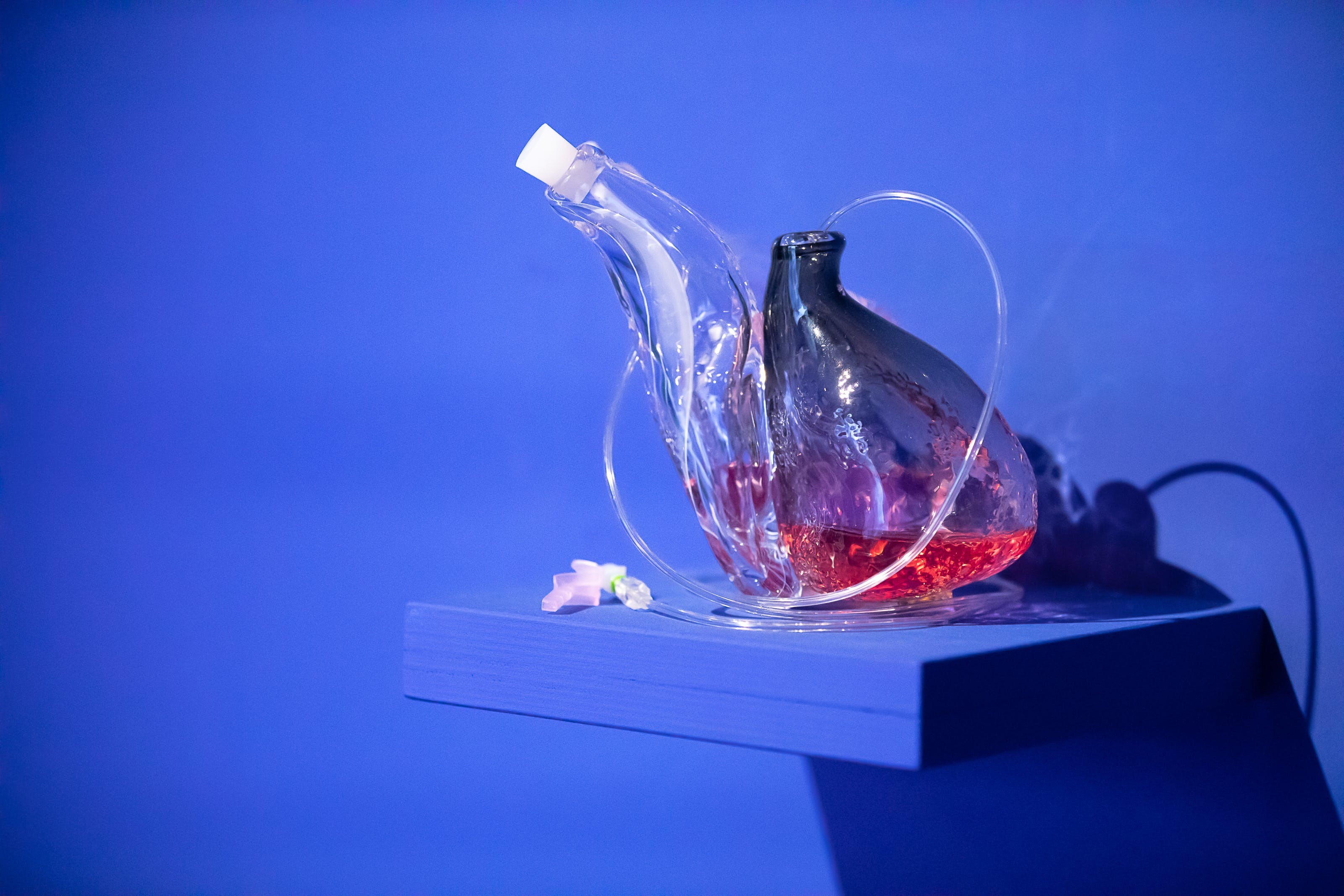
This story evolves as an audiovisual artwork, where visceral and sensorially intense images and soundscapes are used to evoke the sense of fluid eternity that is at the core of the project’s mythology.
My aim was to create an artwork that stimulates alternative mind states and widens the reach of the human sensorium, reminding us of our undeniable interdependence across vast timespans.
